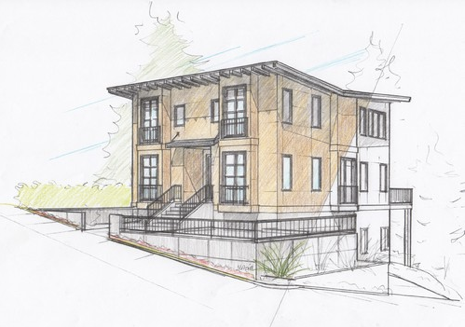American appetite for big homes is falling
Trulia released some very compelling charts and graphs based on opinion research suggesting the demise of the McMansion — the huge, mass-produced housing form associated with sprawl. That’s an encouraging sign for policy makers considering new options for smaller, greener homes inside the city in existing single-family neighborhoods.

Less than 10 percent of Americans consider the McMansion — defined by Trulia as 3,200 square feet or larger — as being the ideal home size. Not all big houses are McMansions, however. Trulia is talking here about big houses, all built at once, and sprawling out. It’s the kind of housing form you’d expect in, say, Texas. But a story on CNBC had these two paragraphs:
Diane Cheatham, owner of Urban Edge Developers in Dallas, said today, the average size of home they’re building is 2,200 square feet, down from 2,500 in 2005 — which was considered small for Dallas back then.
She said the trend there is more toward building green homes instead of big homes. Right now, they’re building a 1,200-square-foot uber-green home for a couple that’s downsizing from 3,000-square feet, Cheatham explained.
And here we were thinking everything was bigger in Texas. There isn’t any clear consensus about why this is happening, though it seems certain that the economy — and unemployment in particular — has a role:
But as the economy recovers, we know density and smaller homes are better than mega houses connected by vast networks of highways. What if we made the best of this situation by creating some policies to make it more economical to live inside urban growth boundaries?
That’s why finalizing small lot legislation in Seattle is so important. Legislation that was passed last year to resolve the “emergency” about development of historic lots is actually a great opportunity to collaboratively address issues with new housing in single-family neighborhoods. There is a growing demand for smaller, more efficient homes and Seattle should be ready to build them.
This post adapted from a post written by the author that originally appeared at Sightline’s Daily Score blog.
Image from Blueprint Capital




